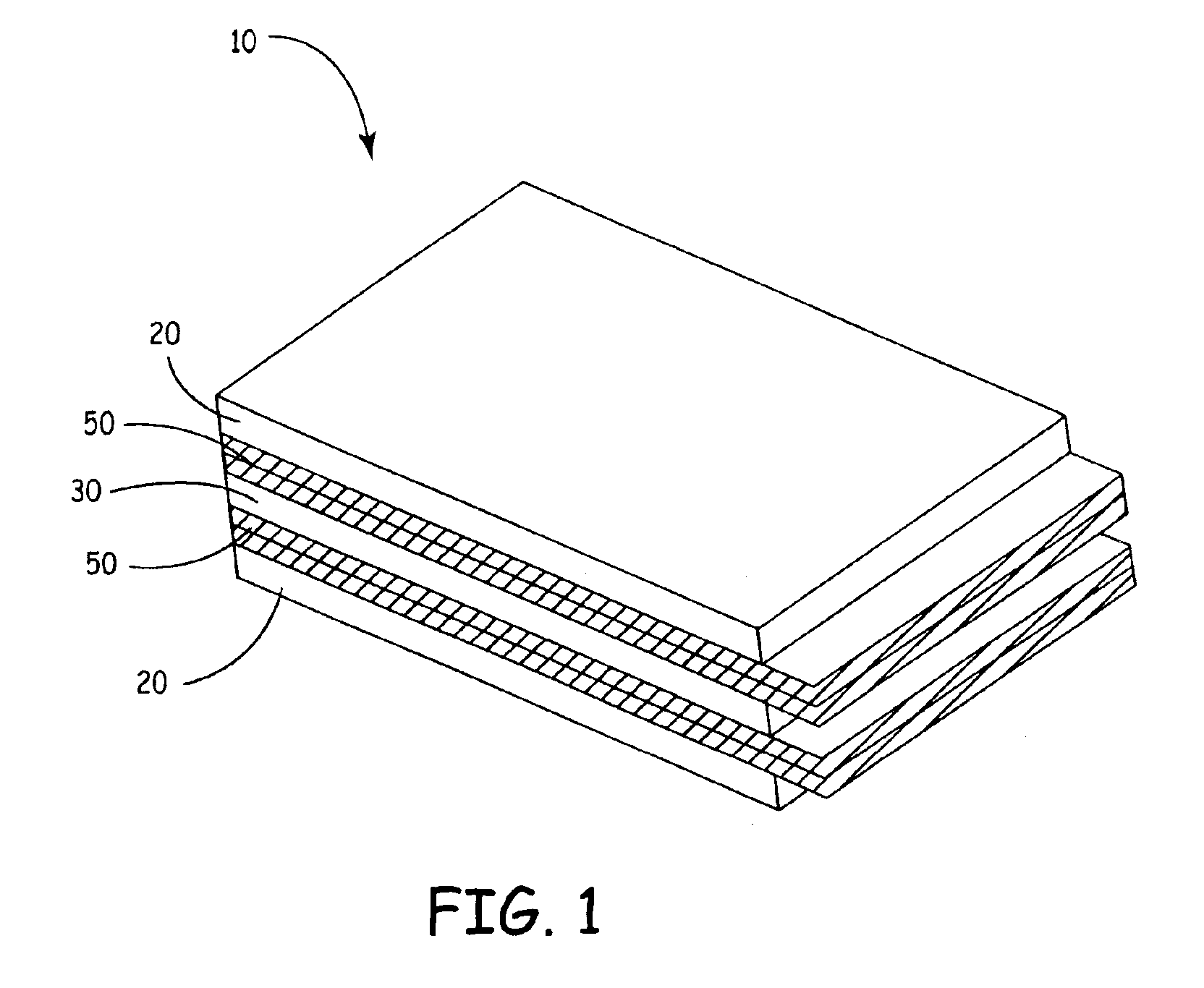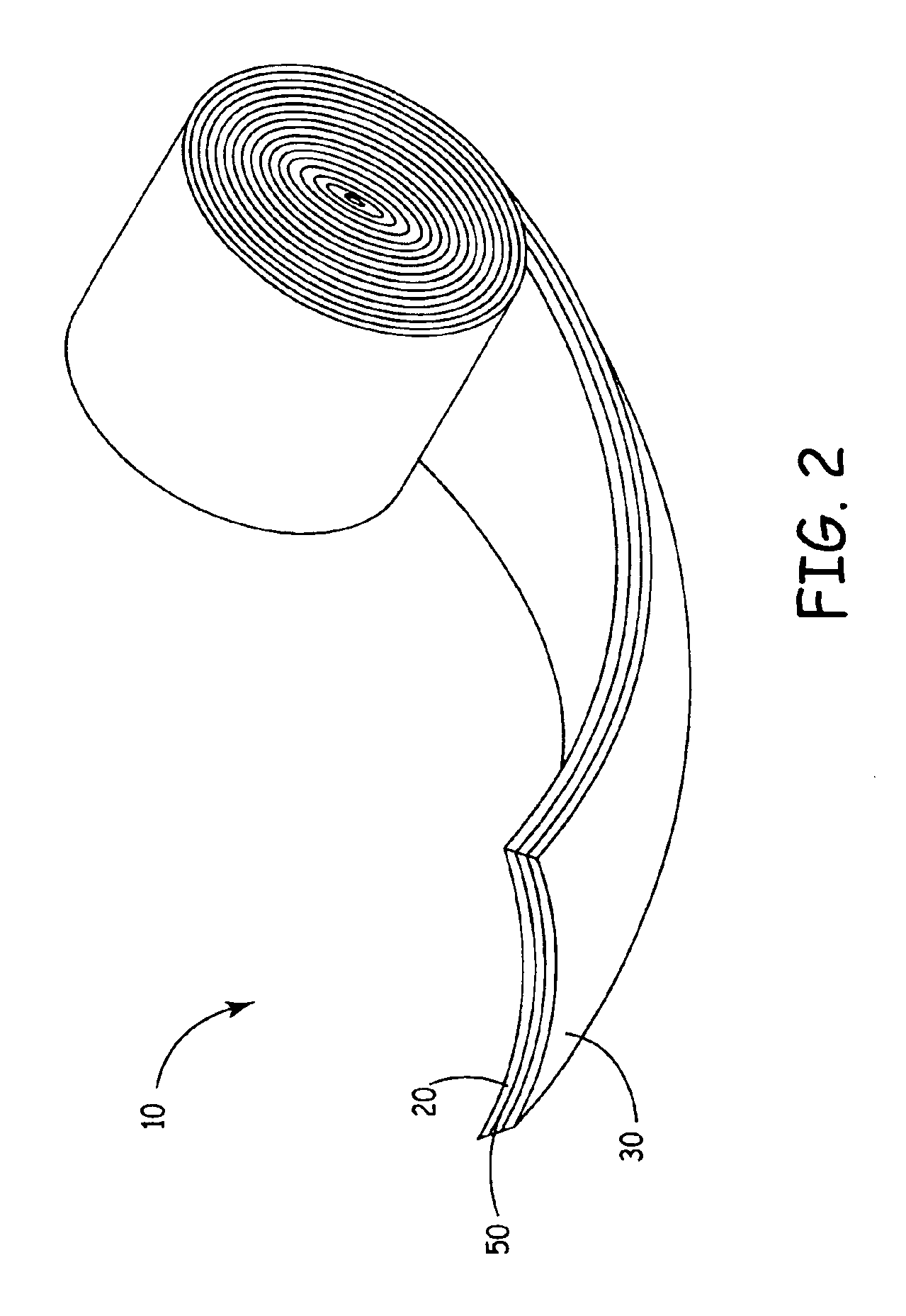Capacitors including interacting separators and surfactants
a technology of separators and capacitors, applied in the field of capacitor cells, can solve the problems of inefficient capacitor performance, difficult maneuvering and maintaining position, and difficulty in preventing short-circuiting or short-circuit conditions of capacitors, and achieve the effect of enhancing wettability and absorption of separators and preventing internal electrical short-circuit conditions
- Summary
- Abstract
- Description
- Claims
- Application Information
AI Technical Summary
Benefits of technology
Problems solved by technology
Method used
Image
Examples
Embodiment Construction
[0024]The present invention comprises a capacitor cell generally including one or more cathodes, one or more anodes, one or more separators disposed between each anode and cathode pair, an electrolyte and one or more surfactants, which enhance the wettability and absorption of the separator. More specifically, the capacitor cell of the present invention includes a separator that is impregnated with a surfactant or that absorbs and / or interacts with a surfactant to provide enhanced wettability and / or electrolyte absorption.
[0025]The separator utilized in the present invention may be produced from any suitable separator material including but not limited to 1) nonwoven polymers, such as polyesters, polystyrenes, aromatic polyesters, polycarbonates, polyolefins, including polyethylene, polyethylene terephthalate, polypropylene, vinyl plastics such as polyvinyl difluoride (PVDF), and cellulose esters such as cellulose nitrate, cellulose butyrate and cellulose acetate; 2) microporous pol...
PUM
| Property | Measurement | Unit |
|---|---|---|
| Wettability | aaaaa | aaaaa |
Abstract
Description
Claims
Application Information
 Login to View More
Login to View More - R&D
- Intellectual Property
- Life Sciences
- Materials
- Tech Scout
- Unparalleled Data Quality
- Higher Quality Content
- 60% Fewer Hallucinations
Browse by: Latest US Patents, China's latest patents, Technical Efficacy Thesaurus, Application Domain, Technology Topic, Popular Technical Reports.
© 2025 PatSnap. All rights reserved.Legal|Privacy policy|Modern Slavery Act Transparency Statement|Sitemap|About US| Contact US: help@patsnap.com



